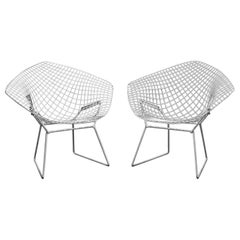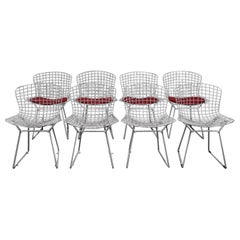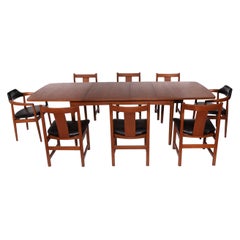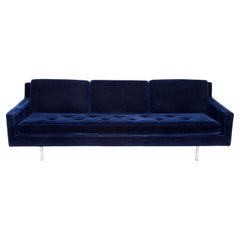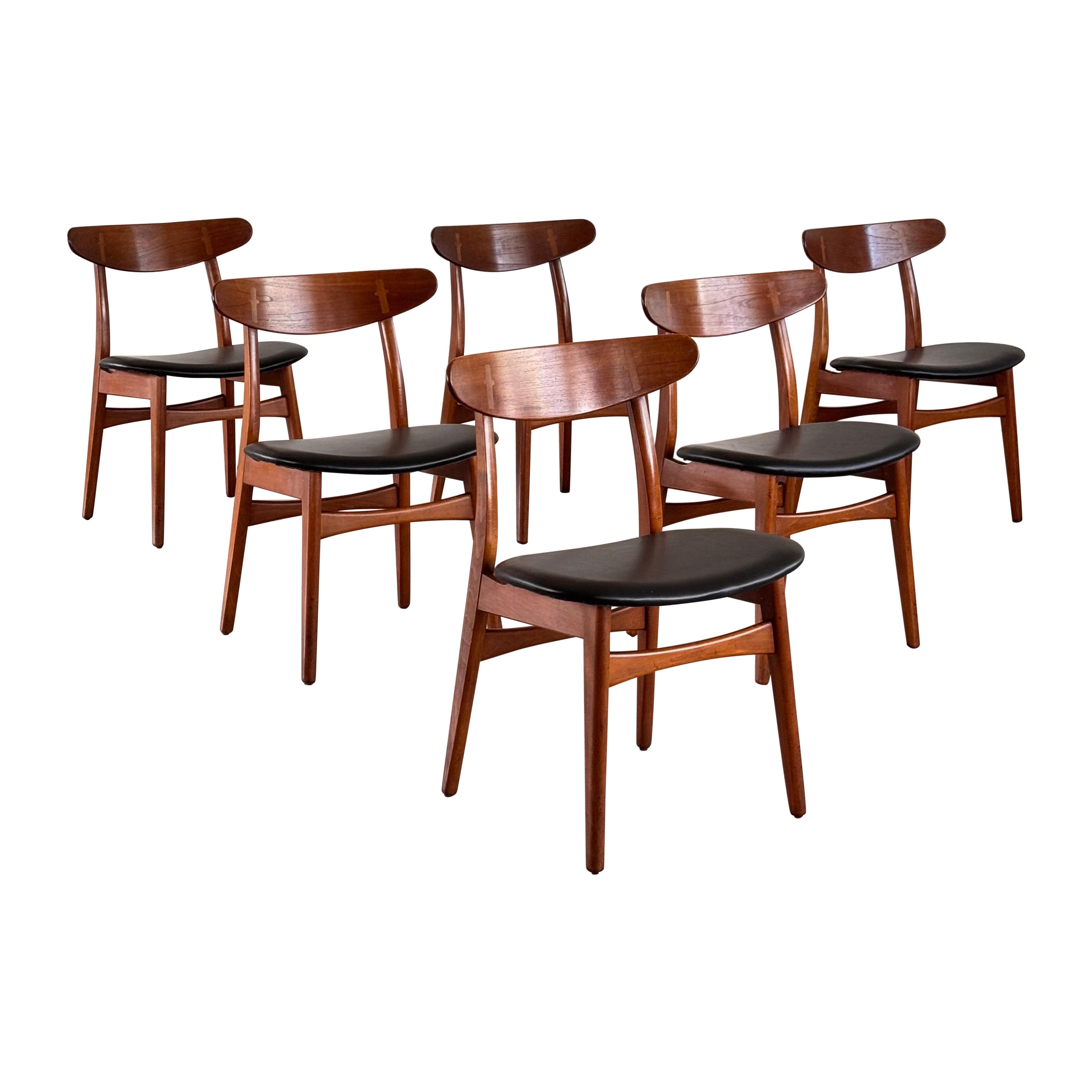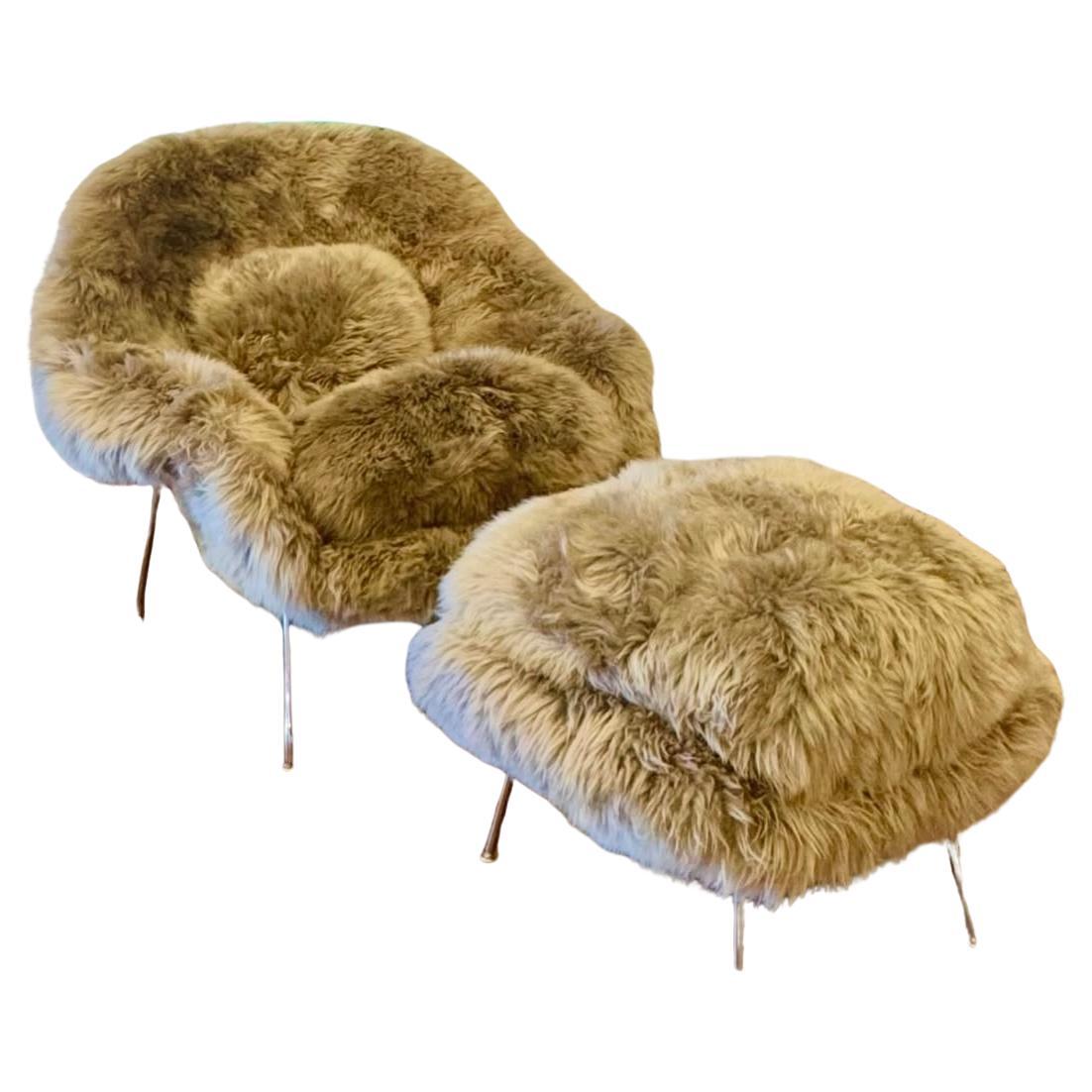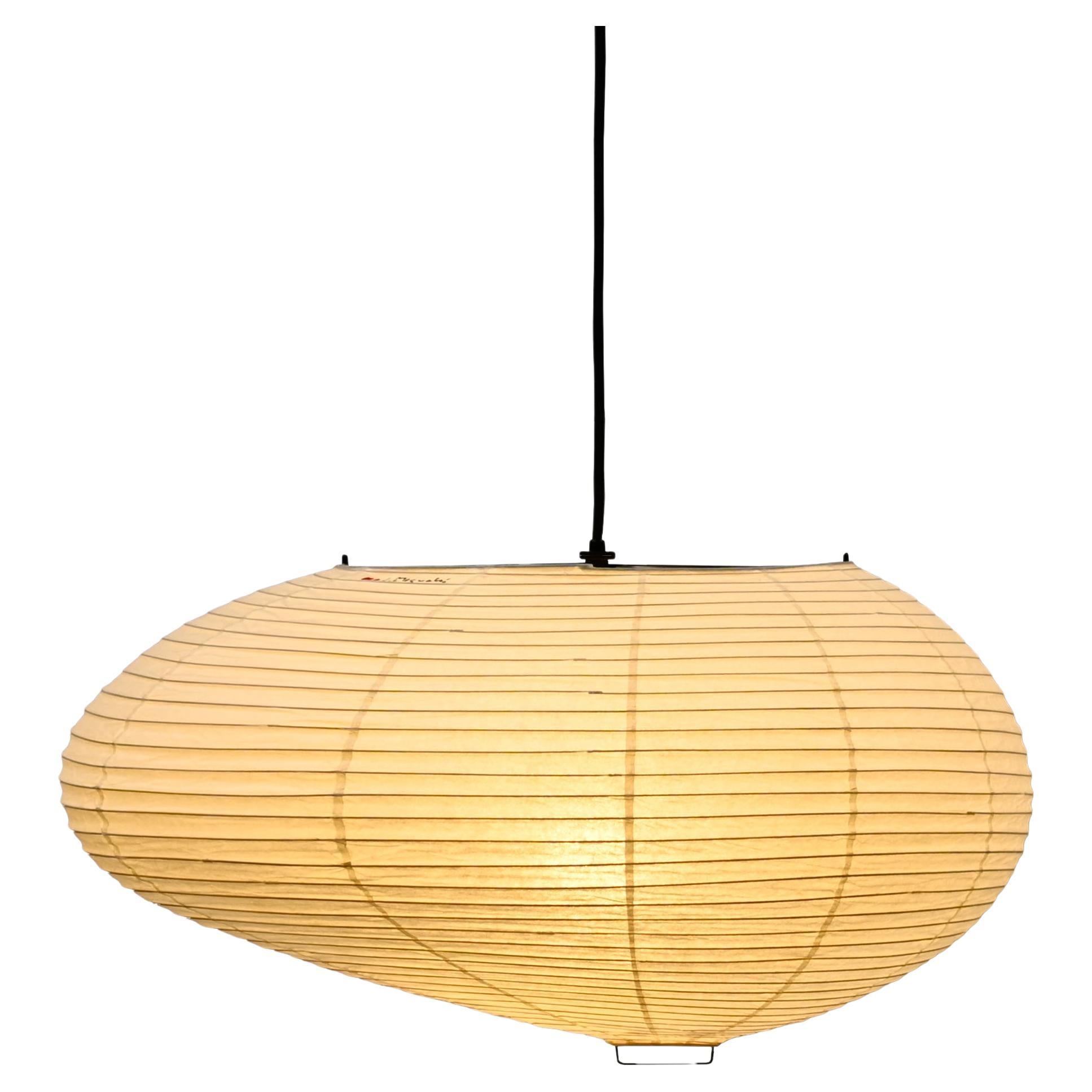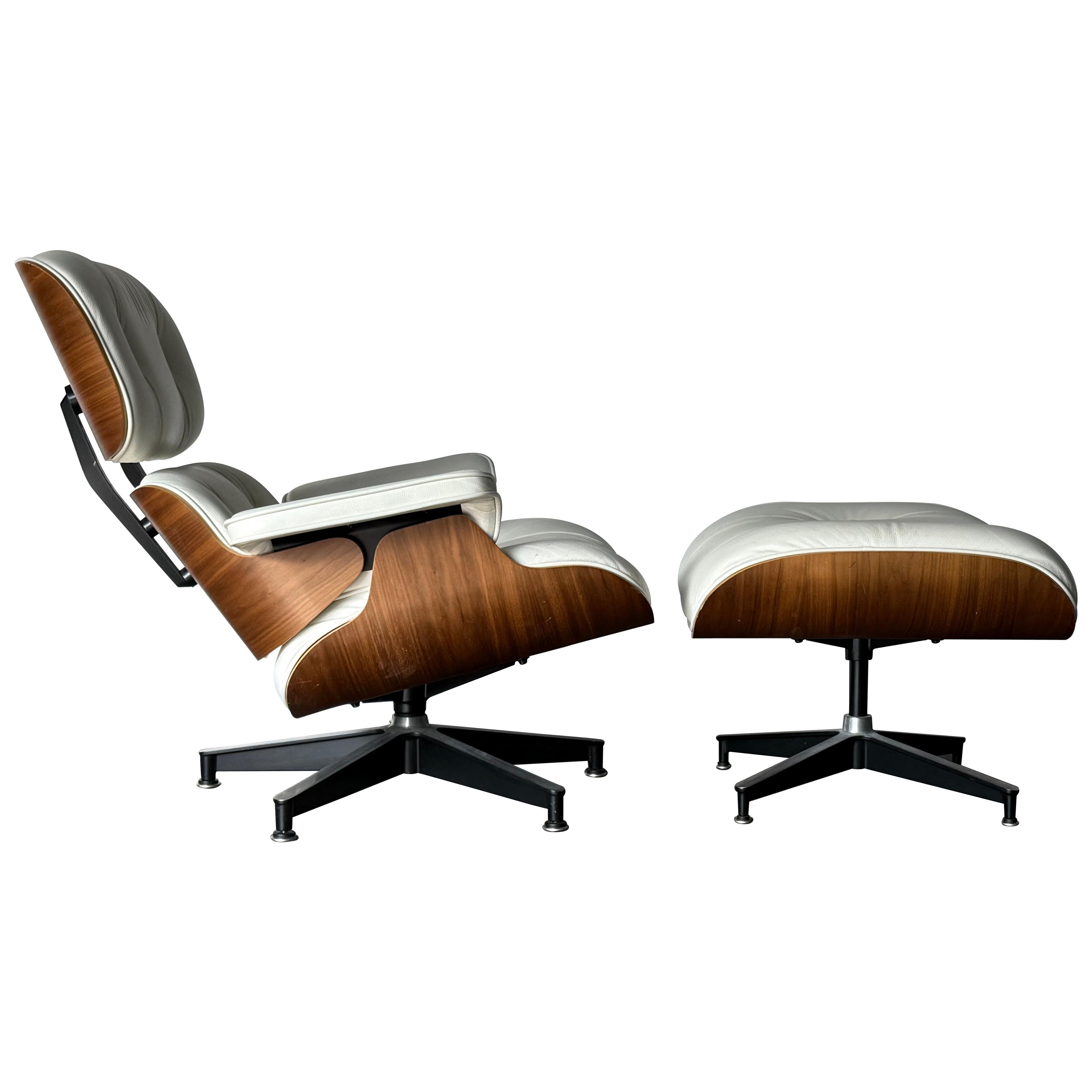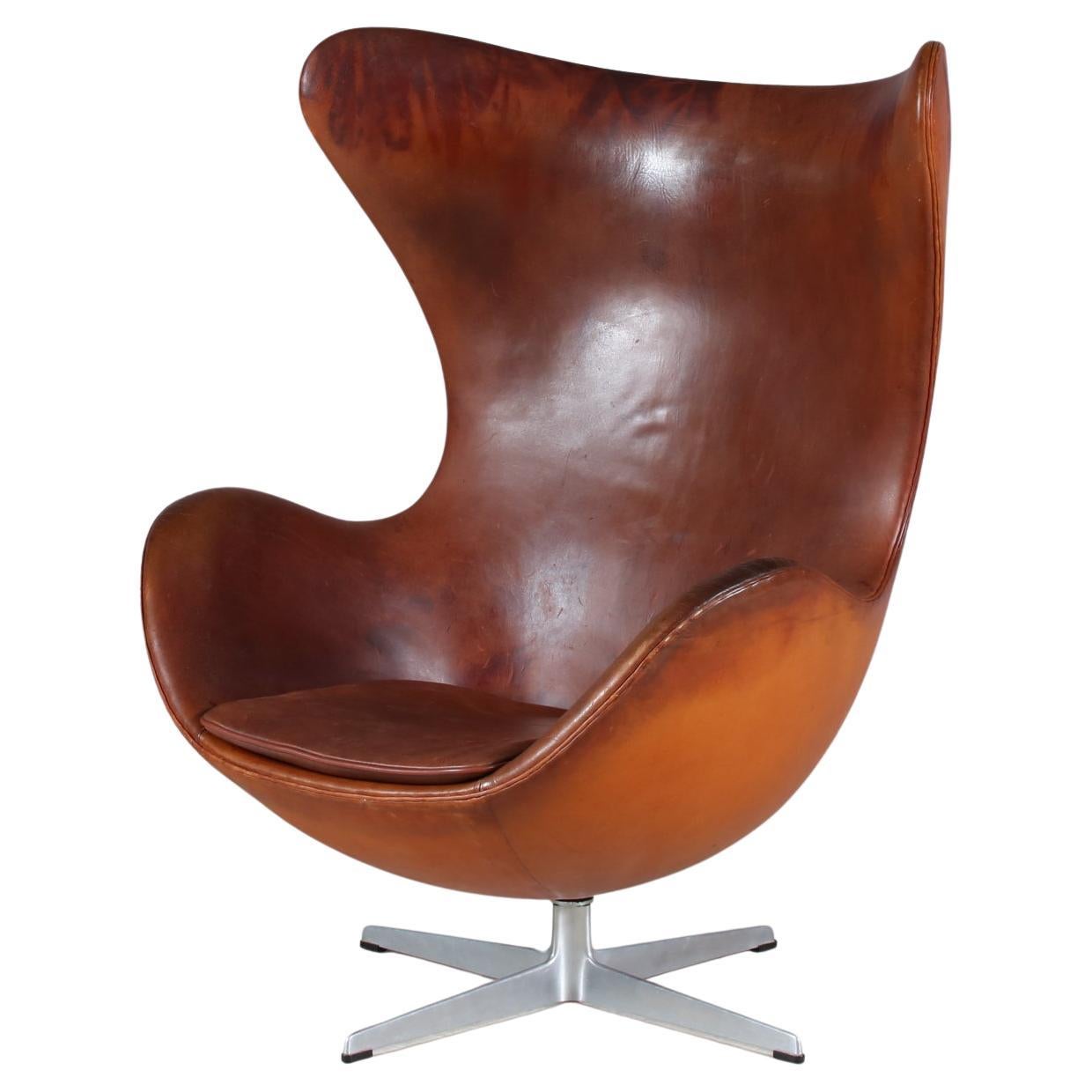Want more images or videos?
Request additional images or videos from the seller
1 of 12
"Wassily" Club Chairs B3 Designed by Marcel Breuer Set of Two Chrome & Leather
A$8,929.10per set
More From This Seller
View AllBertoia Diamond Chairs, White, Set of Two, Welded & Painted Steel
By Harry Bertoia
Located in Bloomfield Hills, MI
SALE ONE WEEK ONLY
Bertoia Diamond Chairs, White, Set of Two, Welded & Painted Steel. They are as elegant, strong and functional as when they were manufactured. The chairs will add a touch of class to any setting.
Harry Bertoia's career began in the 1930s as a student at Cranbrook Academy of Art where he re-established the metal-working studio and later became head of the department before the school closed during WWII due to wartime restrictions on materials in 1943. During the war, Bertoia moved to California and is credited with developing new techniques for molding plywood with Charles and Ray Eames also from Cranbrook.
Harry Bertoia is one of the many well-known artists and designers who attended The Cranbrook Academy of Art in Bloomfield Hills, Michigan, The school & buildings were designed by architect and faculty member, Eliel Saarinen who collaborated with Charles and Ray Eames on chair and furniture design. It is the country’s top ranked, graduate-only program in architecture, design and fine art. Each year, just 75 students are invited to study and live on the landmark Saarinen-designed campus which features: private studios, state-of-the art workshops, the renowned Cranbrook Art Museum and 300 acres of forests, lakes and streams, all a short drive from the city of Detroit. The focus at Cranbrook is on studio practice in one of ten disciplines including Architecture, 2D and 3D Design, Ceramics, Fiber, Metalsmithing, Painting, Photography, Print Media, and Sculpture. The program is anchored by celebrated Artists- and Designers-in-Residence, one for each discipline, all of whom live and practice on campus alongside the graduate students.
Numerous creative artists who are alumni of Cranbrook include: Florence Knoll, Jack Lenor Larsen, Donald Lipski, Duane Hanson, Nick Cave, Hani Rashid, George Nelson, Urban Jupena (Nationally recognized fiber artist), Artis Lane (the first African-American artist to have her sculpture, "Sojourner Truth," commissioned for the Emancipation Hall in the Capital Visitor Center in Washington DC), Cory Puhlman (televised Pastry Chef extraordinaire), Thom O’Connor (Lithographs), Paul Evans (Brutalist-inspired sculpted metal furnishings), Eugene Caples (small bronze images/abstract), Morris Brose (Bronze Sculptures), Herb Babcock (blown glass), Larry Butcher (mixed media), Lauren Anais Hussey (Abstract), Andrea Eis (film, photography), Lilian Swann Saarinen (Sculpture), Douglas Semivan...
Category
Mid-20th Century American Mid-Century Modern Chairs
Materials
Steel
Bertoia, Eight White Welded Steel Chairs with Four Red Cushions
By Harry Bertoia
Located in Bloomfield Hills, MI
SALE ONE WEEK ONLY
This set of eight side chairs & four red cushions are as elegant, strong and functional as when they were manufactured. The colors are bright and the cushions are in very good condition. The chairs will add a touch of class to any setting.
Harry Bertoia's career began in the 1930s as a student at Cranbrook Academy of Art where he re-established the metal-working studio and later became head of the department before the school closed during WWII due to wartime restrictions on materials in 1943. During the war, Bertoia moved to California and is credited with developing new techniques for molding plywood with Charles and Ray Eames also from Cranbrook.
Harry Bertoia is one of the many well-known artists and designers who attended The Cranbrook Academy of Art in Bloomfield Hills, Michigan, The school & buildings were designed by architect and faculty member, Eliel Saarinen who collaborated with Charles and Ray Eames on chair and furniture design. It is the country’s top ranked, graduate-only program in architecture, design and fine art. Each year, just 75 students are invited to study and live on the landmark Saarinen-designed campus which features: private studios, state-of-the art workshops, the renowned Cranbrook Art Museum and 300 acres of forests, lakes and streams, all a short drive from the city of Detroit. The focus at Cranbrook is on studio practice in one of ten disciplines including Architecture, 2D and 3D Design, Ceramics, Fiber, Metalsmithing, Painting, Photography, Print Media, and Sculpture. The program is anchored by celebrated Artists- and Designers-in-Residence, one for each discipline, all of whom live and practice on campus alongside the graduate students.
Numerous creative artists who are alumni of Cranbrook include: Florence Knoll, Jack Lenor Larsen, Donald Lipski, Duane Hanson, Nick Cave, Hani Rashid, George Nelson, Urban Jupena (Nationally recognized fiber artist), Artis Lane (the first African-American artist to have her sculpture, "Sojourner Truth," commissioned for the Emancipation Hall in the Capital Visitor Center in Washington DC), Cory Puhlman (televised Pastry Chef extraordinaire), Thom O’Connor (Lithographs), Paul Evans (Brutalist-inspired sculpted metal furnishings), Eugene Caples (small bronze images/abstract), Morris Brose (Bronze Sculptures), Herb Babcock (blown glass), Larry Butcher (mixed media), Lauren Anais Hussey (Abstract), Andrea Eis (film, photography), Lilian Swann Saarinen (Sculpture), Douglas Semivan...
Category
Mid-20th Century American Mid-Century Modern Chairs
Materials
Metal, Steel
Henrik Worts Erik Worts Danish Mid-Century Modern Mahogany Table & Chairs
Located in Bloomfield Hills, MI
SALE ONE WEEK ONLY
Rare Mid-Century Modern dining table and eight dining chairs with black leather seats by Erik Worts for Henrik Worts Mobelsnedkeri, Denmark. A beautiful hand-c...
Category
Vintage 1960s Danish Mid-Century Modern Dining Room Sets
Materials
Leather, Rosewood
Dunbar Edward Wormley Deep Blue Alpaca Sofa Mid-Century Modern
By Edward Wormley
Located in Bloomfield Hills, MI
SALE ONE WEEK ONLY
Rare Mid-Century Rich Royal Blue Alpaca Three-seat Sofa by Edward Wormley for Dunbar sits on square chrome legs. It has one tufted seat cushion and three loose ba...
Category
Mid-20th Century American Mid-Century Modern Sofas
Materials
Chrome
Paul Evans Pewter Coffee Set, Danish, Mid-Century Modern
By Paul Evans
Located in Bloomfield Hills, MI
SALE ONE WEEK ONLY
"Early Coffee Set" is an exquisite and rare 3-piece pewter coffee set adorned with knobs and handles of rosewood. The set include...
Category
Mid-20th Century Danish Modern Serving Pieces
Materials
Pewter
Coffee Set, Early Paul Evans, Pewter, Danish Mid-Century Modern
By Paul Evans
Located in Bloomfield Hills, MI
SALE ONE WEEK ONLY
"Early Coffee Set" is an exquisite and rare 3-piece pewter coffee set adorned with knobs and handles of rosewood. The set includes coffee pot 8.50” x 6”, covered sugar 4” x 2.88”, and creamer 4” x 3.75" designed for Raymor in Denmark. Underside of each impressed with Pewter and Raymor stamps. These pieces have been restored to Museum Quality by Frank Powell...
Category
Mid-20th Century Danish Modern Serving Pieces
Materials
Pewter
You May Also Like
Wassily Armchairs by Marcel Breuer
By Marcel Breuer
Located in Austin, TX
Armchair, Italian, produced by Gavina. This B3 armchair by Marcel Breuer features a bent chromed steel tubular construction and black stained...
Category
Vintage 1970s Italian Modern Armchairs
Materials
Steel
Vintage 'Wassily' Armchairs by Marcel Breuer, 1970s Replica
By Marcel Breuer
Located in Zagreb, HR
Two iconic Wassily armchairs designed by Marcel Breuer in 1925/26, also known as the 'B3' chair.
Unknown Italian production, circa 1970s.
Made from thick faux leather and chrome.
O...
Category
Vintage 1970s Italian Bauhaus Armchairs
Materials
Steel, Chrome
A$3,083 / set
H 28.94 in W 30.91 in D 28.35 in
Marcel Breuer Wassily lounge chair for Knoll
By Marcel Breuer
Located in Los Angeles, CA
The iconic Wassily chair by Marcel Breuer for Knoll. Originally known as the model B3 chair, this monumental piece of Mid Century Design was first conceived a...
Category
Late 20th Century American Mid-Century Modern Lounge Chairs
Materials
Steel
Wassily chair by Marcel Breuer
By Marcel Breuer
Located in Banská Štiavnica, SK
Wassily chair by Marcel Breuer later production from 1970s. New fabric seat.
Category
Vintage 1970s German Bauhaus Armchairs
Materials
Stainless Steel
B3 Wassily Chair by Marcel Breuer
By Marcel Breuer
Located in Miami, FL
B3 wassily chair by marcel breuer for gavina, italy 1960’s
The Wassily Lounge Chair was designed by Marcel Breuer. Made in off-white canvas with chromed t...
Category
Mid-20th Century Italian Bauhaus Lounge Chairs
Materials
Steel, Chrome
B3 Wassily chair by Marcel Breuer, 1970s.
By Marcel Breuer
Located in Correggio, IT
Wassily armchair designed by Marcel Breuer made of black leather and chromed metal tubular frame. The Wassily B3 Chair is an icon of twentieth-century modernism, ideal for furnishing...
Category
Vintage 1970s Italian Modern Armchairs
Materials
Metal, Chrome
Wassily Chair by Marcel Breuer for Gavina, 1970s
By Gavina, Marcel Breuer
Located in bruxelles, BE
Armchair in chromed metal and black leather. Wear due to time and age of the armchair. Measures: seat height: 43 cm.
Category
Vintage 1970s Italian Mid-Century Modern Armchairs
Materials
Metal
Authentic Wassily Chair By Marcel Breuer For Fasem, Black Leather And Chrome
By Fasem International, Marcel Breuer
Located in Los Angeles, CA
Iconic Bauhaus Design. This is an authentic Wassily Chair designed by Marcel Breuer and produced in Italy by Fasem—a high-end manufacturer known for precision craftsmanship and licen...
Category
Vintage 1980s Italian Bauhaus Armchairs
Materials
Steel, Chrome
A$3,043 Sale Price / item
20% Off
H 28.75 in W 31 in D 27 in
B3 Wassily chairs by Marcel Breuer, 1960s, set of 2
By Marcel Breuer
Located in Correggio, IT
Pair of Wassily armchairs designed by Marcel Breuer made of black leather and chromed metal tubular frame. The Wassily B3 Chair is an icon of twentieth-century modernism, ideal for f...
Category
Vintage 1970s Italian Bauhaus Armchairs
Materials
Steel
1960s Wassily B3 Lounge Chair in Leather by Marcel Breuer
By Marcel Breuer, Gavina
Located in Philadelphia, PA
These are original Wassily B3 Lounge Chairs, initially designed by Marcel Breuer in 1925. These particular examples were produced by Gavina in Italy in the 1960s and were imported an...
Category
Vintage 1960s Italian Modern Lounge Chairs
Materials
Steel, Chrome
A$3,882 / item
H 28.75 in W 28.75 in D 27 in
Armchairs in the Wassily Style by Marcel Breuer, 70s 'Set of 2'
By Marcel Breuer
Located in Roma, RM
Set of 2 armchairs in the Wassily style of Marcel Breuer, made in leather and metal, 1970.
Dimensions: 78W x 74H x 67D cm
Materials: metal, leather.
Category
Vintage 1970s Italian Armchairs
Materials
Metal
A$3,809 / set
H 29.14 in W 30.71 in D 26.38 in
Mid Century Wassily Chair By Marcel Breuer
By Marcel Breuer
Located in Chino Hills, CA
For sale is a genuine mid-century Wassily Chair, a remarkable piece from the iconic designer Marcel Breuer. This chair is a testament to the enduring appeal of mid-century design, sh...
Category
Vintage 1960s Italian Mid-Century Modern Lounge Chairs
Materials
Chrome
Pair Marcel Breuer Chrome Metal And Leather Wassily Style Lounge Chairs
By Knoll, Marcel Breuer
Located in Germantown, MD
A Pair Marcel Brewer Chrome Metal And Leather Wassily Style Lounge Chairs. Very comfortable and in great shape.
Category
21st Century and Contemporary American Mid-Century Modern Lounge Chairs
Materials
Metal, Chrome
A$6,203 / set
H 28.75 in W 30 in D 27.25 in
Wassily Chair by Marcel Breuer, 1928-1968
By Marcel Breuer
Located in AMSTERDAM, NL
The Wassily Chair, designed by Marcel Breuer in 1925, is a landmark in modern furniture design. Originally called the *B3 Chair*, its nickname came from a misunderstanding that it wa...
Category
20th Century Chairs
Materials
Abalone
1970s Gavina Italy Chair "Cesca" by Marcel Breuer
By Marcel Breuer
Located in Biella, IT
Gavina production Italy chair "cesca" by Marcel Breuer design years '70, signed label.
Category
Vintage 1970s Italian Modern Club Chairs
Materials
Metal
Gavina - Marcel Breuer - Armchair (2) - Wassily Chair - Caviar leather
By Marcel Breuer, Gavina
Located in Budapest, HU
Gavina Wassily Chair (1960s)
Designed by Marcel Breuer
Dimensions:
Height: 73 cm Width: 78 cm Depth: 70 cm
This iconic Gavina Wassily Chair, designed by Marcel Breuer in the 1960s...
Category
Vintage 1960s Italian Bauhaus Armchairs
Materials
Chrome
A$6,512 / set
H 28.75 in W 30.71 in D 27.56 in
The 1stDibs Promise
Learn MoreAuthenticity Guarantee
Money-Back Guarantee
24-Hour Cancellation
Vetted Professional Sellers
Price-Match Guarantee
Trusted Global Delivery
